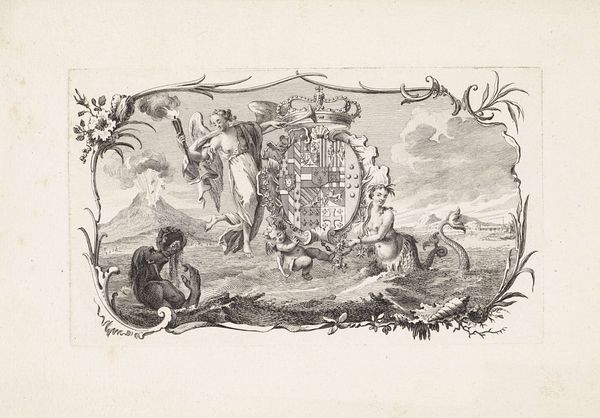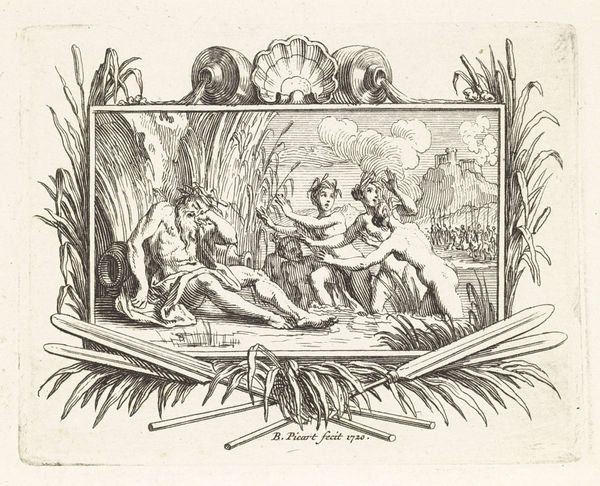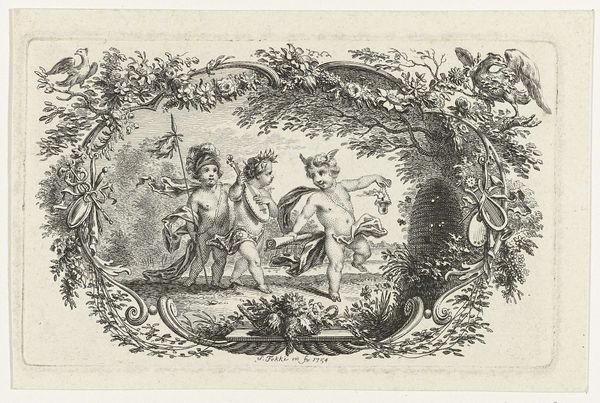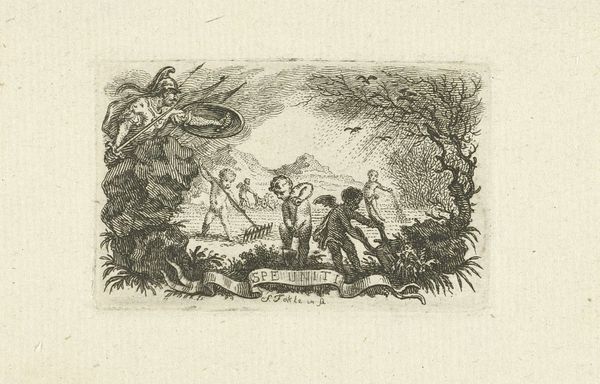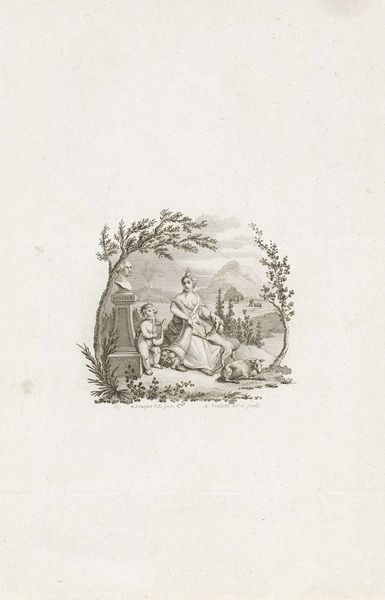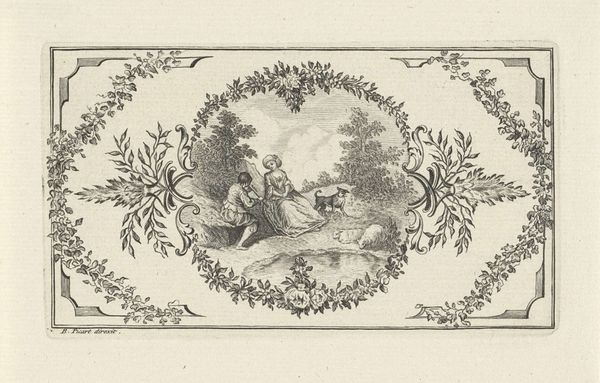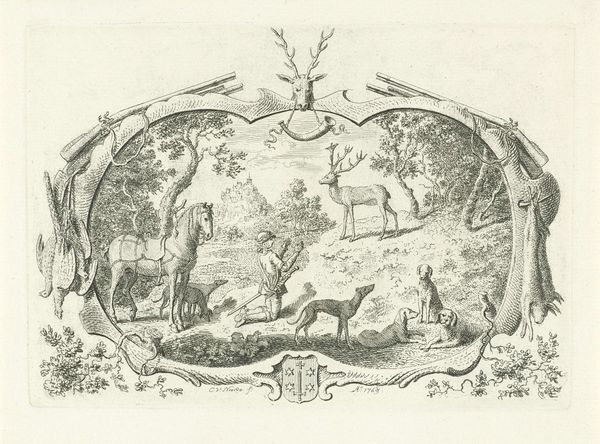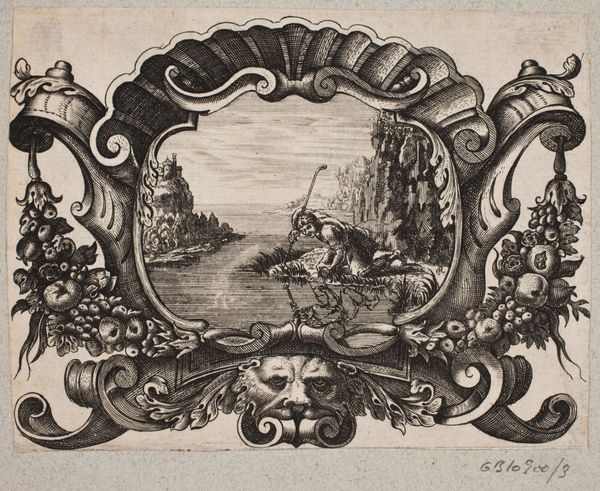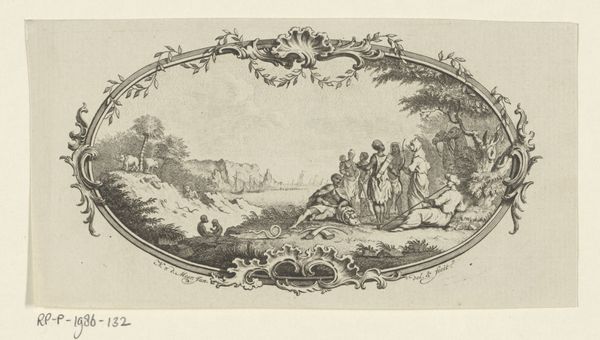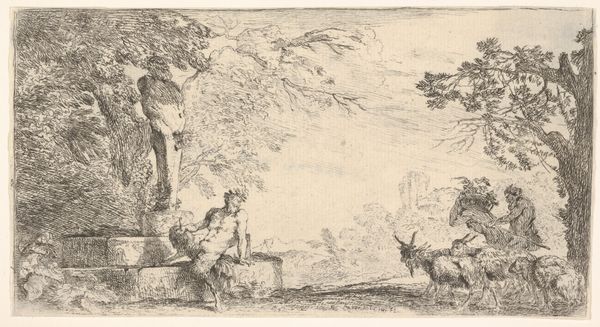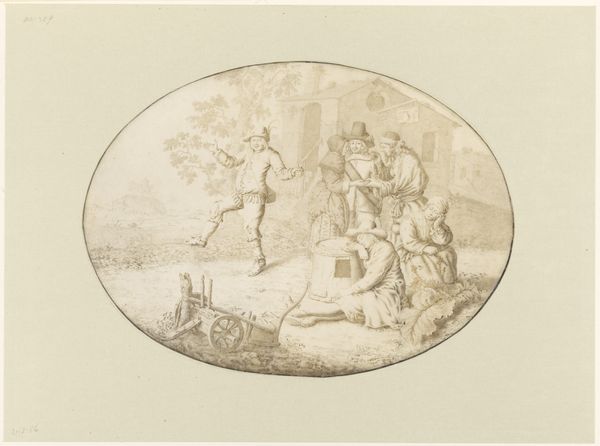
print, engraving
#
allegory
#
baroque
# print
#
pen sketch
#
old engraving style
#
figuration
#
line
#
history-painting
#
engraving
Dimensions: height 98 mm, width 170 mm
Copyright: Rijks Museum: Open Domain
Curator: This engraving, dating back to 1747, is titled "Wapen van stadhouder Willem IV," or "Coat of Arms of Stadtholder William IV." It’s the work of Jan Punt. I find the details remarkable given the medium. Editor: It has such an airy feel! The figures almost seem to float against the paper. What exactly is it made of? Curator: It's an engraving, printed on paper. The artist incised the image into a metal plate, applied ink, and then transferred that to the paper. Editor: I see. So, William IV, as in, a member of the House of Orange? I’m guessing that explains the presence of lions on the shield? Curator: Precisely. The shield displays the arms associated with William IV and his various titles, indicating his position and power. But it's not just a straightforward heraldic representation; it's wrapped in allegory. Look at the putti surrounding the shield—they're not just decoration. Editor: They do seem rather busy for cherubs. Is one of them holding an oar or something similar? It contrasts strikingly with the infant sitting calmly, almost melancholically, while water pours from an urn next to him. Curator: Exactly. One wields a paddle, likely alluding to maritime power. The urn, a classical motif, symbolizes abundance and prosperity, essential virtues to project. This connects with larger narratives about Dutch power, wealth, and national identity at the time. Consider the visual rhetoric employed—how does it shape perceptions of power? Editor: It strikes me that even these choices of materials speak to power. The act of engraving and printing provided accessibility of this image. Mass production democratized what otherwise would have been symbols limited to elite, noble visibility. Curator: That's a vital point. The material reality – the reproducibility of printmaking – has the effect of both propagating an image but also potentially changing its perceived value, even inviting critiques of that power it represents. It begs us to question whose perspectives are amplified by art, and whose are obscured. Editor: Right, because if everyone has a print of the coat of arms, it no longer belongs solely to the Stadtholder himself. Very interesting to consider it through that lens. I will have to consider the social context that defines the symbolic weight to such a work of art. Thanks.
Comments
No comments
Be the first to comment and join the conversation on the ultimate creative platform.
